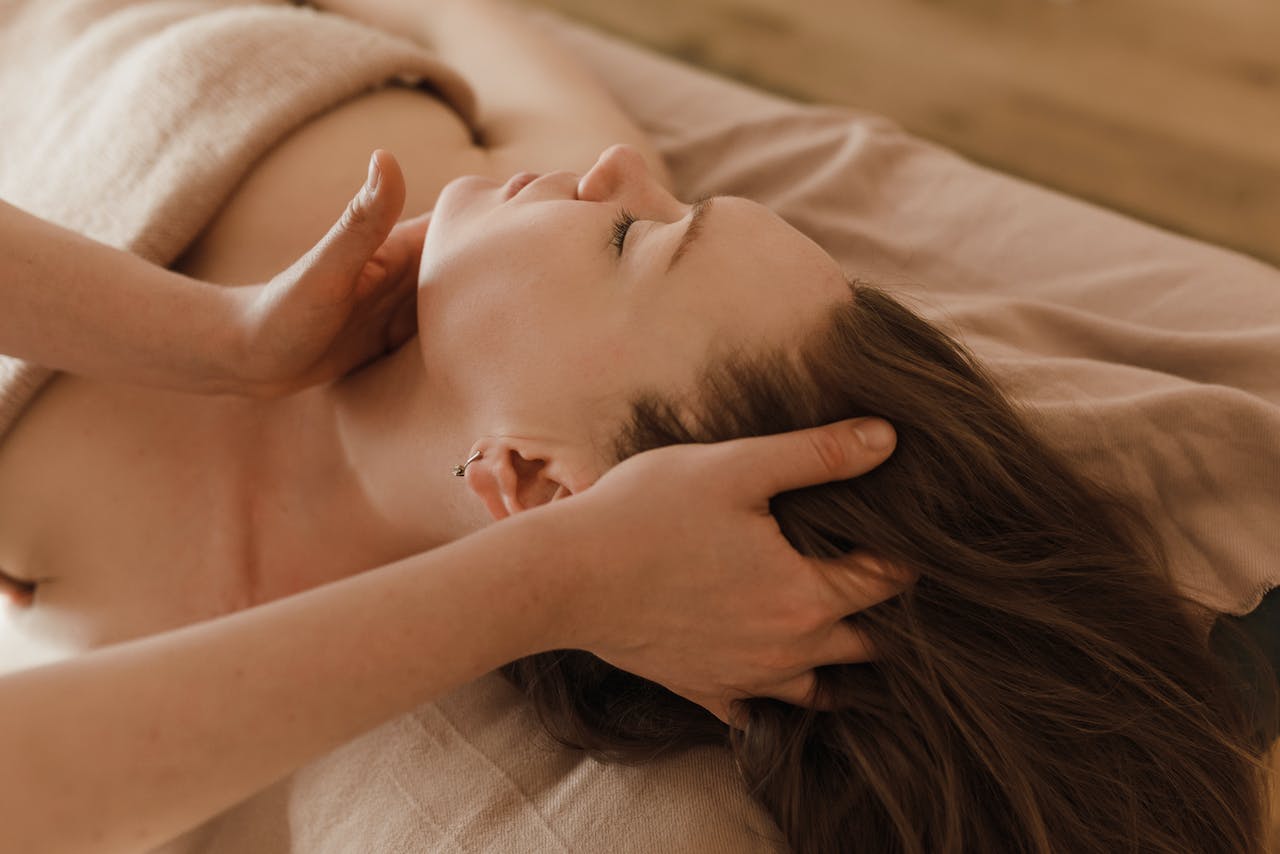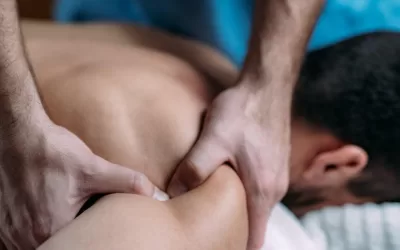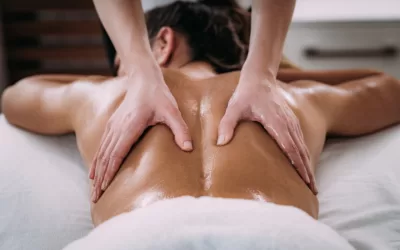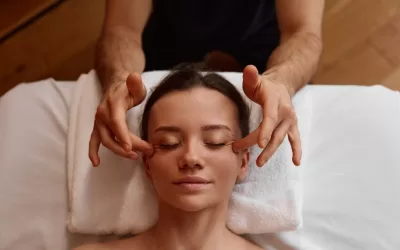Discover how Structural Integration can enhance traditional scoliosis treatments. By integrating Structural Integration, a holistic approach focusing on body alignment and movement patterns, with conventional scoliosis therapies, patients may experience improved posture, reduced pain, and increased mobility. This article delves into the benefits of combining Structural Integration techniques with standard scoliosis treatments to address the underlying structural imbalances associated with scoliosis effectively. Learn how this integrative approach offers a comprehensive solution for individuals seeking to manage scoliosis symptoms and improve their overall well-being.
Understanding Structural Integration
Structural Integration, a specialized form of bodywork, plays a crucial role in enhancing the alignment and balance of individuals dealing with scoliosis. Through targeted sessions, Structural Integration practitioners focus on releasing tension and tightness in the muscles surrounding the spine. This process can significantly reduce the pain and discomfort associated with scoliosis by promoting better spinal alignment.
Moreover, Structural Integration sessions are tailored to address specific areas affected by scoliosis, such as the pelvis, ribcage, and shoulders. By concentrating on these regions, Structural Integration aims to improve overall posture and mobility for individuals struggling with scoliosis. For men specifically, Structural Integration offers a unique approach to addressing structural imbalances and enhancing body awareness through techniques like Structural Integration (SI).
Core Principles
Structural Integration operates on fundamental principles centered around enhancing the body’s structural alignment through manual manipulation techniques. The holistic approach of Structural Integration towards scoliosis involves addressing not just the symptoms but also the root causes of misalignment within the body. By focusing on improving body alignment, Structural Integration aims to create lasting changes that promote better movement patterns and overall well-being.
Structural Integration vs Conventional Therapy
In comparison to traditional scoliosis treatments, Structural Integration stands out due to its hands-on techniques that directly target muscular imbalances and misalignments in the body. Unlike conventional therapies that may primarily rely on bracing or surgery, Structural Integration offers a more personalized approach through manual manipulation. The complementary nature of Structural Integration with conventional treatments lies in its ability to enhance the effectiveness of other therapies by improving overall body alignment and function.
Scoliosis Overview
Scoliosis is a condition characterized by an abnormal sideways curvature of the spine, affecting individuals of all ages. The impact of scoliosis on the spine can lead to postural issues, discomfort, and reduced mobility if left untreated. There are various types of scoliosis, including idiopathic scoliosis (of unknown cause) and congenital scoliosis (present at birth). Early detection and appropriate treatment play a crucial role in managing scoliosis effectively.
Structural Integration’s Effectiveness
Structural Integration can significantly enhance conventional scoliosis treatments for men by targeting specific areas of tension and misalignment. This targeted approach helps address the root causes of pain and discomfort associated with scoliosis. By focusing on improving body alignment, Structural Integration aims to reduce pain levels and enhance overall well-being in scoliosis patients.
The potential benefits of Structural Integration extend to improving postural alignment and reducing pain related to scoliosis. Through Structural Integration (SI) techniques, Structural Integration practitioners work towards creating long-term postural improvements. These techniques aim to reorganize the body’s structure, promoting better alignment and functionality over time.
Scientific Evidence
Scientific studies have shown promising results regarding the effectiveness of Structural Integration in managing scoliosis. Research indicates that Structural Integration can positively influence spinal curvature by addressing muscular imbalances and promoting better alignment. Studies have highlighted the role of Structural Integration in improving postural symmetry and reducing pain levels in scoliosis patients.
Case Studies
Real-life examples demonstrate the transformative effects of Structural Integration on individuals with scoliosis. Case studies reveal significant improvements in posture and reduced pain levels following Structural Integration sessions. Before-and-after scenarios showcase the visible impact of Structural Integration on enhancing body alignment and overall well-being for scoliosis patients.
Complementing Scoliosis Treatment
Structural Integration, a type of bodywork focusing on structural alignment, can be a valuable addition to conventional scoliosis treatments. It offers benefits in reducing pain and enhancing the overall effectiveness of treatment. Men, who may have different needs compared to women, can particularly benefit from Structural Integration’s tailored approach.
Structural Integration (SI) techniques used in Structural Integration target the root causes of scoliosis, providing long-term relief and improved mobility. By addressing structural imbalances and promoting better alignment, Structural Integration complements traditional treatments by offering a holistic approach to managing scoliosis.
A multidisciplinary approach to treating scoliosis is crucial for optimal outcomes. Integrating Structural Integration into the treatment plan allows for a comprehensive strategy that addresses both the physical and emotional aspects of the condition. Collaboration between Structural Integration practitioners and medical professionals ensures a well-rounded care plan for patients with scoliosis.
Integrating Structural Integration
- Incorporate Structural Integration sessions into the overall scoliosis treatment plan
- Coordinate with medical professionals to ensure alignment with other interventions
- Enhance patient care through a combined approach that considers individual needs
Structural Integration’s integration into conventional scoliosis treatments emphasizes a holistic view of patient care. By working alongside medical professionals, Structural Integration practitioners can tailor sessions to complement existing treatments effectively. This collaborative effort aims to optimize patient outcomes by addressing the multifaceted nature of scoliosis management.
Treatment Synergy
- Combine Structural Integration with physical therapy to enhance treatment effectiveness
- Utilize Structural Integration techniques for improved pain management and mobility
- Enhance patient well-being through a synergistic approach that targets various aspects of scoliosis
The synergy between Structural Integration and traditional treatments enhances the overall effectiveness of scoliosis management. By integrating Structural Integration sessions with physical therapy, patients can experience improved pain relief and increased mobility. This combined approach offers a comprehensive solution that addresses both the physical discomfort and emotional impact of living with scoliosis.
Structural Integration Benefits
Structural Integration enhances conventional scoliosis treatments by addressing postural imbalances through Structural Integration sessions. It helps men with scoliosis improve their structural alignment and reduce pain with targeted techniques. Structural Integration (SI) in Structural Integration aids in releasing tension in the fascia, promoting better movement patterns for scoliosis patients. Structural Integration complements scoliosis treatment plans by focusing on improving body mechanics and overall posture for long-term benefits.
Posture Improvement
Structural Integration techniques can help correct posture misalignments in scoliosis by realigning the body’s structure. Improved posture plays a crucial role in reducing scoliosis-related discomfort as it alleviates pressure on the spine. The long-term benefits of posture enhancement through Structural Integration include improved balance, reduced strain on muscles, and enhanced mobility.
Discuss how Structural Integration addresses specific postural issues unique to individuals with scoliosis, such as uneven hips or shoulders. By targeting these areas, Structural Integration aims to bring the body back into proper alignment for better function. Improved posture not only enhances physical appearance but also contributes to overall well-being and quality of life.
Pain Reduction
Structural Integration has been shown to alleviate pain associated with scoliosis by releasing tension and tightness in affected muscles. Through manual manipulation and movement education, Structural Integration helps reduce discomfort levels in scoliosis patients. The hands-on approach of Structural Integration aids in breaking down scar tissue and adhesions that contribute to pain.
Explain how Structural Integration promotes relaxation and reduces muscle spasms, providing relief from chronic pain experienced by individuals with scoliosis. By addressing both physical and emotional aspects of pain, Structural Integration offers a holistic approach to managing discomfort. With regular Structural Integration sessions, individuals may experience long-lasting pain relief and improved quality of life.
Enhancing Mobility
Structural Integration plays a crucial role in improving spinal alignment for men dealing with scoliosis, offering targeted sessions to address specific structural imbalances. By focusing on the spine and hips, specialized rolfing techniques enhance flexibility and range of motion, which are essential for managing scoliosis symptoms effectively.
Active Range of Motion
Structural Integration significantly contributes to enhancing the range of motion for individuals with scoliosis. Through specific techniques, such as deep tissue manipulation and myofascial release, Structural Integration helps loosen tight muscles and fascia, allowing for improved flexibility. This increased mobility is vital in scoliosis management as it aids in reducing stiffness and discomfort associated with the condition.
Improving active range of motion through Structural Integration can lead to better posture and reduced pain levels for scoliosis patients. The hands-on approach of Structural Integration helps release tension in the muscles surrounding the spine, promoting smoother movement and increased comfort during daily activities. By targeting areas of restriction, Structural Integration enables individuals to move more freely and comfortably.
Flexibility Increase
Structural Integration plays a significant role in increasing flexibility among individuals with scoliosis. By working on soft tissues and fascia, Structural Integration aims to release tension and restrictions that may be limiting movement. Enhanced flexibility not only improves overall comfort but also supports better spinal alignment, reducing the impact of scoliosis on daily life.
The specialized techniques used in Structural Integration sessions target specific areas prone to stiffness and tightness due to scoliosis. By focusing on these areas, such as the lower back and hips, Structural Integration practitioners can help individuals achieve greater flexibility gains, leading to improved mobility and reduced pain levels. Through a series of sessions, individuals can experience lasting benefits in terms of enhanced flexibility and comfort.
Improving Overall Well-being
Structural Integration, when combined with conventional scoliosis treatments, can significantly enhance treatment outcomes for men. By addressing both the physical and emotional aspects of scoliosis, rolfing offers a holistic approach to improving overall well-being. This alternative therapy focuses on the body’s fascia and the sacroiliac (SI) joint, targeting structural imbalances caused by scoliosis.
Men with scoliosis can benefit from improved posture, reduced pain, and increased mobility through the integration of rolfing into their treatment plan. By working on the fascia and SI joint, rolfing helps alleviate tension and discomfort associated with scoliosis. This hands-on therapy complements traditional treatments by promoting better alignment and movement in the body.
Psychological Benefits
Structural Integration sessions not only address physical symptoms but also provide psychological benefits for individuals with scoliosis. The treatment can help reduce stress and anxiety related to scoliosis, offering a sense of relaxation and relief during sessions. Patients often report feeling more at ease mentally after undergoing rolfing therapy.
The emotional well-being improvements experienced by scoliosis patients after rolfing are significant. Many individuals note a decrease in feelings of anxiety and worry about their condition following regular rolfing sessions. This emotional support plays a crucial role in enhancing the overall treatment experience for those with scoliosis.
Quality of Life
Structural Integration plays a vital role in enhancing the quality of life for scoliosis patients by improving daily functioning and activities. Post-rolfing, individuals often experience increased ease in performing tasks that were previously challenging due to their condition. This improvement in functionality contributes to an overall enhancement in quality of life.
The positive impact of rolfing extends beyond physical changes, influencing general well-being positively among scoliosis patients. By addressing both the physical and emotional aspects of the condition, rolfing helps individuals feel more balanced and at ease in their bodies. This comprehensive approach leads to an overall improvement in quality of life for those undergoing treatment.

Alternatives to Structural Integration
When it comes to scoliosis treatment in men, exploring alternative therapies like Structural Integration can offer unique benefits. Structural Integration focuses on structural integration, aiming to improve posture and alignment. This approach can complement conventional scoliosis treatments effectively.
Structural Integration sessions involve specific techniques that target key areas such as the SI joint. By addressing these areas, Structural Integration aims to reduce pain and discomfort associated with scoliosis. The hands-on manipulation in Structural Integration can help release tension and restore balance to the body.
One of the significant advantages of incorporating Structural Integration into scoliosis management is its focus on alignment and posture correction. These aspects are crucial in alleviating symptoms and enhancing overall well-being for individuals with scoliosis.
Physical Therapy
Physical therapy plays a vital role in the comprehensive treatment of scoliosis. Through targeted exercises, physical therapy aims to strengthen muscles, improve flexibility, and enhance overall mobility. These exercises can complement Structural Integration sessions by supporting the body’s structural realignment.
The collaborative approach between Structural Integration and physical therapy offers a holistic strategy for managing scoliosis. While Structural Integration focuses on structural integration and alignment, physical therapy addresses muscle imbalances and functional movement patterns. Together, they work synergistically to improve the patient’s condition.
Surgical Options
In severe cases of scoliosis where conservative treatments are insufficient, surgical interventions may be considered. Procedures such as spinal fusion surgery aim to correct spinal curvature and stabilize the spine. However, surgery poses risks such as infection, blood loss, and potential complications.
Before opting for surgery, healthcare providers carefully evaluate factors like the degree of curvature, progression rate, and impact on organ function. Surgery is typically recommended when conservative measures fail to halt disease progression or alleviate symptoms significantly.
Patient Testimonials
Men with scoliosis have reported significant relief and improvements in their condition through rolfing treatment. Many have experienced enhanced posture and reduced pain after undergoing rolfing sessions. The SI technique, in particular, has shown promising results in alleviating scoliosis symptoms.
Success Stories
Structural Integration has played a crucial role in the journeys of scoliosis patients, leading to remarkable transformations. Patients have shared inspiring testimonials about their experiences with rolfing, highlighting substantial improvements in their daily lives. The positive impact on posture and pain management has been particularly noteworthy.
- Improved posture
- Reduced pain levels
- Enhanced quality of life
Rehabilitation Journeys
The rehabilitation process for scoliosis patients undergoing rolfing involves multiple stages aimed at enhancing flexibility and alignment. Through consistent sessions, individuals experience gradual progress towards better spinal health. Commitment to the rehabilitation journey is key to achieving long-term benefits.
- Initial assessment and goal setting
- Targeted rolfing sessions focusing on specific areas of concern
- Regular monitoring of progress and adjustments as needed
Professional Insights
Structural Integration can complement traditional scoliosis treatments for men by improving body alignment. This approach, when combined with physical therapy, addresses structural imbalances effectively. The unique techniques of Structural Integration focus on enhancing overall body alignment, especially beneficial for individuals with scoliosis.
Professional insights highlight the potential benefits of Structural Integration in alleviating pain and discomfort, particularly in the sacroiliac (SI) joint region. By targeting specific areas of tension and misalignment, Structural Integration can provide relief from symptoms associated with scoliosis. Integrating Structural Integration with conventional treatments can lead to enhanced outcomes and long-term postural improvements.
Healthcare professionals emphasize the importance of integrating Structural Integration into scoliosis treatment plans. They recognize the value of this holistic approach in addressing both physical and emotional aspects of the condition. By combining Structural Integration with traditional therapies, patients may experience comprehensive care that targets various facets of scoliosis management.
Expert opinions suggest that Structural Integration offers a unique perspective on treating scoliosis by focusing on whole-body alignment. Therapists specializing in Structural Integration can provide tailored sessions to address individual needs and promote better posture and mobility. By incorporating Structural Integration into treatment protocols, healthcare providers aim to optimize patient outcomes and quality of life.
Closing Thoughts
In conclusion, the practice of Structural Integration offers a promising avenue for individuals seeking to complement conventional scoliosis treatments. By focusing on structural integration and enhancing mobility, Structural Integration can play a significant role in improving the overall well-being of those dealing with scoliosis. The testimonials from patients and insights from professionals further underscore the benefits of incorporating Structural Integration into the treatment regimen. While alternative therapies exist, Structural Integration stands out for its holistic approach and potential to address the root causes of postural misalignments.
For those navigating scoliosis management, considering Structural Integration as a complementary therapy could be a valuable step towards achieving enhanced physical alignment and improved quality of life. Exploring this integrative approach under the guidance of trained practitioners may open up new possibilities for individuals looking to optimize their well-being amidst scoliosis challenges.
Frequently Asked Questions
1. What is Structural Integration and how does it relate to scoliosis treatment?
Structural Integration is a form of bodywork focused on realigning the body by manipulating soft tissues. It complements scoliosis treatment by addressing postural imbalances and enhancing structural alignment, potentially reducing pain and improving mobility in scoliosis patients.
2. Is Structural Integration effective in treating scoliosis?
While Structural Integration is not a standalone treatment for scoliosis, it can be effective as a complementary therapy. By improving body alignment, reducing muscle tension, and enhancing flexibility, Structural Integration may help alleviate some symptoms associated with scoliosis.
3. How does Structural Integration benefit structural integration?
Structural Integration aims to improve posture and movement patterns by releasing tension in the fascia and muscles. This process helps align the body’s structure, promoting better balance and coordination. Through systematic manipulation, Structural Integration can enhance structural integration over time.
4. Can Structural Integration help improve overall well-being in scoliosis patients?
Yes, Structural Integration can contribute to the overall well-being of individuals with scoliosis. By addressing physical imbalances and promoting relaxation, it may help reduce pain levels, increase body awareness, and enhance emotional well-being, leading to an improved quality of life.
5. Are there any alternatives to Structural Integration for individuals seeking complementary scoliosis treatments?
Yes, there are alternative therapies that can complement conventional scoliosis treatments. These may include chiropractic care, physical therapy, yoga, Pilates, or massage therapy. Each approach offers unique benefits in supporting the management of scoliosis alongside traditional medical interventions.
Elevating Scoliosis Management with Structural Integration: Achieve Structural Balance with MedicinEvolution’s Revolutionary Approach!
Are you or someone you know navigating the complexities of scoliosis, seeking relief from pain, or aspiring to improve posture and body alignment? MedicinEvolution stands at the forefront of integrating Structural Integration into scoliosis management and structural integration, offering individuals a path to optimal health and bodily harmony. By employing the transformative techniques of Structural Integration, MedicinEvolution directly addresses the underlying imbalances caused by scoliosis, initiating a holistic healing process. Bid adieu to the discomforts of scoliosis, including chronic pain and the uneven stresses on your body—as MedicinEvolution customizes its approach to meet your body’s specific needs, guiding you towards significant relief and structural correction. Their personalized Structural Integration sessions are crafted to guide you beyond the pain and restrictions scoliosis brings, unlocking your body’s true potential.
If scoliosis has been a source of persistent pain, discomfort, or has limited your movement and quality of life, MedicinEvolution’s innovative strategy, combining Structural Integration with advanced techniques for scoliosis care, is precisely what you need. Don’t allow scoliosis to set the limits of your physical well-being—take the step and schedule your consultation with MedicinEvolution now! Embark on a journey with their Structural Integration-centered treatments and begin moving towards a more balanced, pain-free, and optimally aligned life. Your body, now liberated from the challenges of scoliosis, will celebrate the extraordinary transformation!





